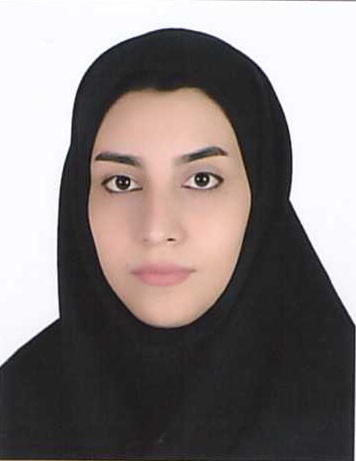مهسا حسینی - Mahsa Hosseini
عنوان : ساخت و مشخصه¬يابي فوم آلومينيومي با استفاده از كره¬هاي توخالي سراميكي به روش فلزخوراني
TITLE : Fabrication and Characterization of Aluminum Foam using Ceramic Hollow Spheres by Infiltration
چكيده
فومهاي فلزي حفره بسته در سالهاي اخير مورد توجه بسيار قرار گرفته و بهخصوص در سبكسازي سازههاي با استحكام مخصوص بالا استفاده شدهاند. خواص اين فومها به ويژگيهاي آلياژ زمينه، چگالي نسبي فوم، شكل و اندازه حفرهها، ويژگيهاي مواد فضاساز و عيوب ساختاري آنها وابسته است. در اين پژوهش ساخت و مشخصهيابي فوم حفره بسته تركيبي از جنس آلياژ Al-4.5wt%Cu به روش فلزخوراني با استفاده از فضاساز كرههاي توخالي سراميكي مورد توجه قرار گرفت. بدين منظور ابتدا مذاب آلياژ مورد نظر به روش فلزخوراني تحت فشار گاز در پيششكلهاي ساخته شده از كرههاي توخالي سراميكي از جنس آلومينا با قطرهاي متفاوت در بازه 2-5 ميليمتر رخنه داده شد و تاثير پارامترهاي دماي مذاب، فشار گاز، مقدار آلياژ، قطر كرههاي سراميكي و ايجاد شيار در كف شمش آلياژ بر ميزان رخنهدهي مذاب و عيوب ساختاري فومهاي ساخته شده بررسي شد. بر اساس نتايج بهدست آمده دماي 725 درجه سانتيگراد و فشار 5/1 بار بهعنوان مقادير مناسب براي توليد فوم حفره بسته انتخاب شدند. اعمال فشار مناسب براي پاره كردن پوسته اكسيدي دور شمش آلياژ و غلبه بر مقاومت به نفوذ پيششكل سراميكي و استفاده از دماي مذاب مناسب براي سياليت كافي مذاب جهت رخنه در پيش شكل سراميكي ضروري است. دما و فشار كمتر موجب عدم رخنهدهي يا رخنهدهي ناقص مذاب، و دما و فشار بيشتر موجب افزايش احتمال ايجاد عيوب ساختاري ديگر و افزايش مصرف انرژي ميشود. مقدار آلياژ استفاده شده نقش موثري بر توليد فوم سالم با حداقل تعداد كرههاي سراميكي پر شده با مذاب داشت. همچنين مشخص شد ايجاد شيار در شمش تأثير قابلتوجهي در فرايند فلزخوراني ندارد. بيشترين درصد حجمي ذرات فضاساز و به تبع آن كمترين چگالي، به ترتيب برابر با حدود 76 درصد و 6/1 گرم بر سانتيمتر مكعب، براي كرههايي با قطر ميانگين حدود 4 ميليمتر (بزرگترين كرههاي استفاده شده) بهدست آمد. بيشترين استحكام تسليم فشاري و مقدار جذب انرژي به ترتيب برابر با حدود 40 مگاپاسكال و 19 كيلوژول بر متر مكعب براي فوم ساخته شده با كرههاي سراميكي با قطر ميانگين حدود 2 ميليمتر (كوچكترين كرههاي استفاده شده) و با 63 درصد حجمي ذرات فضاساز بهدست آمد. نتايج آزمون سختي سنجي نشان داد كه وجود كرههاي سراميكي در زمينه فلزي اثر قابل توجهي بر سختي زمينه فلزي نداشت. مقدار سختي در ناحيه فصل مشترك زمينه-كرههاي سراميكي حدود 59 ويكرز بود.
كلمات كليدي: فوم حفره بسته آلومينيوم-مس، كرههاي توخالي سراميكي، فلزخوراني، چگالي، خواص مكانيكي
Abstract
Closed cell metal foams have attracted a lot of attentions in recent years and have especially been used in light weight high specific strength structures. Properties of these foams depend on the characteristics of the base alloy, the relative density of the foam, the shape and size of the cells, the properties of the space holder materials and their structural defects. In this research, fabrication and characterization of syntactic closed cell Al-4.5wt%Cu alloy foam by infiltration method using ceramic hollow sphere space holder was considered. For this purpose, first the molten alloy was infiltrated in preforms made of alumina hollow spheres of different average diameters (2-5 mm) through a gas pressure infiltration method. The effects of infiltration temperature and pressure, amount of alloy, diameter of the ceramic spheres and grooving at the bottom of the ingots on the melt penetration and structural defects of the fabricated foams were investigated. Based on the results, 725 °C and 1.5 bar were selected as the suitable infiltration temperature and pressure for fabrication of closed cell foams. The selected pressure was the threshold pressure for breaking the oxide shell around the alloy ingot and overcoming the penetration resistance of the ceramic preform. The selected temperature was also the threshold temperature providing sufficient fluidity for the melt to penetrate into the ceramic preform. Lower temperatures and pressures would cause incomplete infiltration, and higher temperatures and pressures would increase the probability of formation of other structural defects and increase the energy consumption. The amount of alloy used had a significant effect on the number of filled ceramic spheres in the fully penetrated foams. It was also found that grooving of the ingots had no significant effect on the infiltration process. The highest volume percentage of the space holder obtained and, consequently, the lowest foam density achieved, were about 76% and 1.6 g/cm۳, respectively, for ceramic spheres with an average diameter of about 4 mm (the largest ceramic spheres used). The highest compressive strength and energy absorption of about 40 MPa and 19 kJ/m۳ were obtained for the foam made with the smallest ceramic spheres (average diameter of about 2 mm) which had 63 volume percent of ceramic space holder. Hardness tests showed that presence of ceramic spheres did not have a significant effect on the hardness of the metal matrix. The hardness around the ceramic-metal interface was about 59 Vickers.
Keywords: Al-Cu closed cell foam, Ceramic hollow spheres, Infiltration, Density, Mechanical Properties

